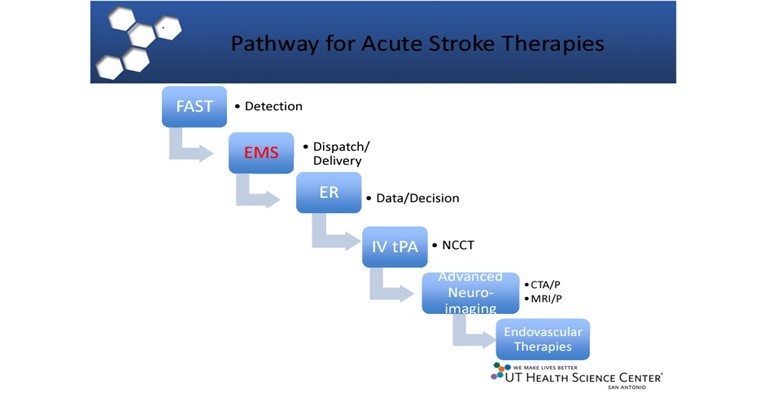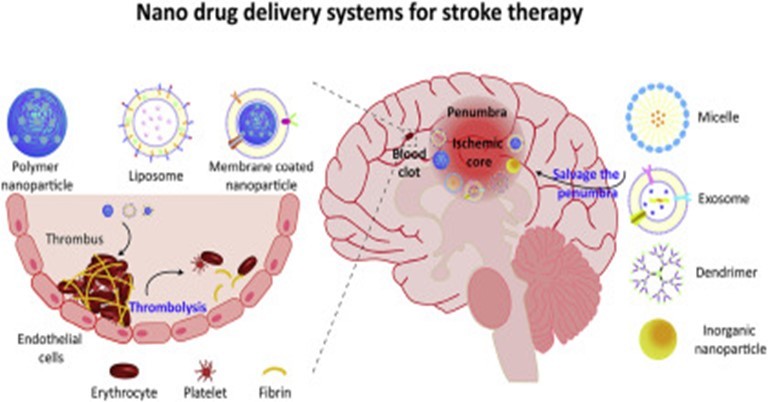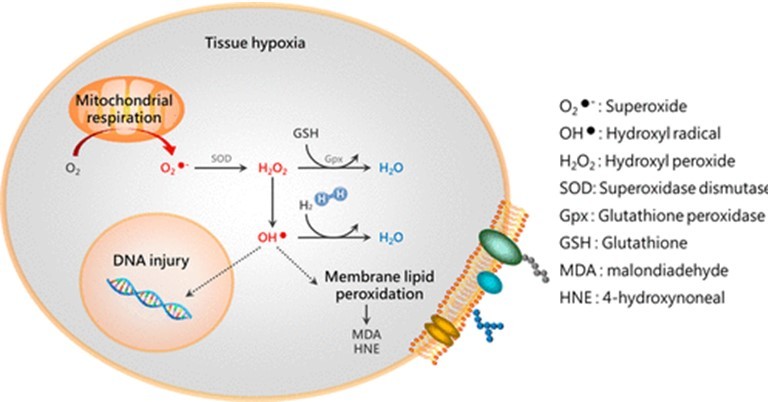Emerging Therapies in Stroke Management
M3 India Newsdesk Mar 01, 2024
This article explores cutting-edge innovations & technologies transforming stroke management in India, including advanced stroke-ready centres, neurosurgical interventions, etc. He also offers a glimpse into a future with improved stroke outcomes & enhanced patient care nationwide.

Globally, ischaemic stroke is a leading cause of mortality and disability. Only tissue plasminogen activator or mechanical thrombectomy administered intravenously, however, is regarded as an authorised and successful course of treatment. Molecular hydrogen is a newly discovered medicinal substance that has drawn attention from researchers.
Molecular hydrogen has been studied in many preclinical and clinical studies in a variety of administration formats, such as inhaling hydrogen gas, injecting hydrogen-enriched solution intravenously or intraperitoneally, or drinking hydrogen-enriched water.
Molecular hydrogen is involved in antioxidative, anti-inflammatory, and antiapoptotic functions in normal physical processes and may play a significant role in stroke management.
Based on all current data, molecular hydrogen appears to be a potentially effective treatment option for stroke prevention in the future.
Artificial intelligence, mobile stroke units, and telestroke are just a few of the technologies that are becoming more and more important in diagnosing and treating stroke.
In the realm of stroke management, where time is of the essence, innovation is paramount. India's stroke care environment is changing as a result of innovative technology developments. These developments are revolutionising the treatment of stroke, giving survivors fresh hope, and greatly raising the standard of care.
Advanced stroke ready centres (Asrcs) – 360 degrees stroke management solution
- ASRCs are poised to revolutionise the landscape of stroke care in India. ASRCs are vital centres for quickly diagnosing and treating stroke victims.
- These specialised facilities offer rapid assessment and access to advanced therapies, including thrombolytic drugs and endovascular procedures, which are crucial in improving patient outcomes.
- Additionally, ASRCs have dedicated stroke teams made up of skilled medical professionals who work together to provide prompt and appropriate care.
- ASRCs can bridge geographical barriers and facilitate remote consultations with stroke specialists by extending the reach of stroke expertise through the use of tele-stroke capabilities.
- Because of this, ASRCs provide a substantial improvement to India's healthcare system, speeding up treatment and improving the standard of care for stroke victims.
Interventions in neurosurgery: Role of technology
Brain surgeries in stroke, especially aneurysm clipping are quite complex and need expertise and skill to ensure good outcomes in patients.
- Semi-robotic advanced microscopes and exoscopes: Technology like semi-robotic advanced microscopes and exoscopes, allows access to deeper structures within the brain and skull base, making surgery easier and more precise.
- ICG (indocyanin gree) utility: With software upgradation like ICG (indocyanin gree) utility, real-time clipping of aneurysm can be confirmed intraoperatively.
- MRI/CT images: The neuronavigation system converts MRI/CT images into a 3D image; and helps navigate the instruments on the patient while operating.
- Brain robot: A recent addition to the tech is a brain robot which precisely targets lesions located deep in the brain for biopsy without much damage to surrounding tissue.
All these technological advancements help make surgeries safer and more accurate giving better outcomes for patients.
Neurostimulation: Reconnecting the brain
Traditional stroke therapies often fall short of delivering effective recovery outcomes.
Neurostimulation, a burgeoning field in stroke management, is changing the game. Neurostimulation involves applying external stimuli or impulses to the brain to enhance neuroplasticity and reorganise neural networks.
Techniques like Transcranial magnetic stimulation (TMS) and transcranial direct current stimulation (tDCS) target specific brain regions, expediting the rehabilitation process.
Neurostimulation enhances motor function and cognitive capacities in conjunction with conventional therapy, thereby improving the quality of life for stroke survivors.
Smart wearable’s: A helping hand
Stroke survivors are susceptible to complications like recurrent strokes and heart problems.
- To address this, smart wearables equipped with advanced sensors and connectivity features have emerged as valuable tools for stroke management in India.
- These devices, such as smartwatches and fitness trackers, continuously monitor vital signs, activity levels, and sleep patterns.
- Patients and medical professionals benefit from this real-time data since it makes it easier to recognise warning symptoms early and lowers the chance of consequences.
- Coupled with specialised apps, wearables offer personalised exercise programs and medication reminders, enabling patients to actively engage in their recovery.
Robot-assisted recovery: Precision rehabilitation
After a stroke, regaining lost functions frequently necessitates extensive and ongoing rehabilitation.
- Exoskeletons and robotic limbs are two examples of robotic-assisted technology that provide a special method. These devices provide controlled and precise movements during therapy sessions, aiding patients in regaining mobility, strength, and coordination.
- Advanced sensors and algorithms tailor rehabilitation programs to individual needs, offering real-time feedback and motivation. Robotic-assisted recovery fosters neuroplasticity and functional gains through intensive training.
Stroke biomarkers: Insights for personalised care
Timely detection of strokes is crucial for effective interventions. Startups in India are developing biomarkers that offer insight into stroke mechanisms.
These biomarkers, found in blood, cerebrospinal fluid, or imaging scans, help healthcare professionals understand the stroke's severity and prognosis. They also enable monitoring therapy responses, allowing for treatment adjustments and optimisation.
Advanced imaging: Precision diagnosis and treatment
In the management of stroke, accurate diagnosis and therapy are essential. Innovations in computed tomography (CT), magnetic resonance imaging (MRI), and positron emission tomography (PET) provide precise images, aiding in understanding stroke location and severity.
These advanced techniques also monitor treatment response, enabling personalised care planning and adjustments.
Tele-stroke: Bridging geographical gaps
- Access to specialised stroke care is challenging in remote areas of India. The tele-stroke system connects healthcare professionals across locations, enabling remote assessment and treatment.
- Neurologists can evaluate patients and review imaging scans via video conferencing, ensuring timely decisions regarding thrombolytic therapy.
- Tele-stroke also offers ongoing follow-up and rehabilitation support through virtual consultations and remote monitoring, ensuring comprehensive care.
Targeted drug delivery systems: Precise medication
Systemic drug delivery limitations and side effects pose challenges in stroke management.
Novel drug delivery methods in India, like controlled-release and nanoparticle-based carriers, direct drugs to the stroke site, increasing their effectiveness and lowering systemic side effects.

Gene therapy: Unlocking brain repair potential
India is investigating gene therapy to promote neurogenesis, improve synaptic plasticity, and lower inflammation in response to the rising age-related stroke risk.
Genetic therapies deliver growth factors like brain-derived neurotrophic factor (BDNF), promoting neuronal regeneration and protecting against secondary damage.
Connected care technology: Convenience meets rehabilitation
Access to personalised and connected care including consistent monitoring and engaging elderly patients have been longstanding challenges in stroke management.
Specialised connected home care solutions offer personalised care, interactive exercises, and cognitive stimulation within the comforts of home.
This way, healthcare professionals can monitor and connect their patients remotely saving travel time to the hospital. The information from these devices helps in making smart decisions about treatment for better patient outcomes.
Molecular hydrogen therapy in stroke
Patients with local cerebral infarction who received hydrogen inhalation as part of their treatment had a reduced infarct size, improved neurological outcomes and the ability to perform daily activities compared to untreated patients. In addition, its protective properties against mitochondrial damage and the permeability of the blood-brain barrier were noted.


Within India's ever-changing stroke care environment, these developments are spurring innovation and changing the way we think about stroke treatment. As we embrace these advancements, we hold the promise of better outcomes and improved lives for stroke survivors throughout the country. The future of stroke management in India looks brighter than ever.
Disclaimer- The views and opinions expressed in this article are those of the author and do not necessarily reflect the official policy or position of M3 India.
About the author of this article: Dr Nikhil Repaka is a Neuro physician at Jagruth Super Specialty Hospital, Khammam.
-
Exclusive Write-ups & Webinars by KOLs
-
Daily Quiz by specialty
-
Paid Market Research Surveys
-
Case discussions, News & Journals' summaries